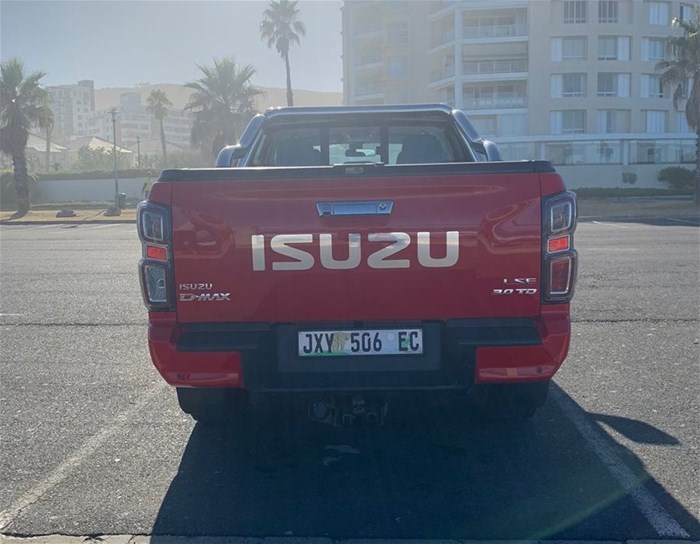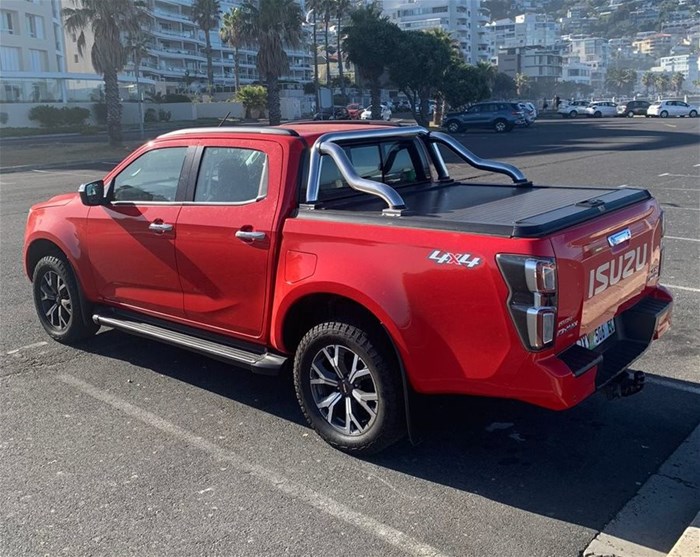
Subscribe & Follow
Isuzu D-Max double cab review: The ultimate workhorse bakkie?

So, what is the Isuzu D-Max bakkie all about?
The new D-Max is the seventh generation of Isuzu bakkies to be manufactured in Gqeberha over the past 42 years, that’s right, 42 years.
Isuzu says this new model is a culmination of a R1.2bn investment in its local operations, which was announced in 2019. The bakkies are produced for our local market and are exported to 25 left and right-hand drive markets across Africa.
The new D-Max has a 24-model line-up of single cab, extended cab, and double cable derivatives with two engine options and five specification levels. The models come with manual and automatic transmissions in either 4x2 or 4x4.
The derivative that I tested was the Ddi Double Cab 4x4 LSE A/T, which costs R771,100. This model has a six-speed automatic transmission along with a 3l engine. It delivers 140kW of power at 3,600r/min and a maximum torque figure of 450Nm.
What does the new D-Max come with?
All new D-Max models come with ABS brakes, electronic brakeforce distribution, brake assist, electronic stability control with traction control, hill start assist, hill descent control, and trailer sway control.
Added to that is a 9-inch infotainment system, Android Auto and Apple CarPlay, and airbags (different amounts for different models).
On the LSE model, there is a passive entry and start system feature, keyless unlocking, a push-start button, and an automatic locking function. It also has 18-inch wheels with a tyre pressure monitoring system, eight speakers, LED head and tail lamps, dual-zone automatic air-conditioning, a tow bar, roof rails, and a chrome tubular sports bar.
So, what do I think about the new D-Max
As I mentioned, I would seriously consider buying a high-end D-Max. The reason for this is that I feel one gets a lot in the goodie bag for its price tag as its stacked with features and capability. Getting a lot and paying a reasonable amount is what every consumer wants.
From a driving perspective, the bakkie delivers on all fronts. I tested it in different driving modes and it was capable of handling whatever was thrown at it. Not once did it feel like the D-Max was going to let me down when I needed to do something a little extra (4x4 driving) during my seven-day stint with it. The engine also packs a punch and I found myself doing overtakes without much effort. It was just a pleasure to drive.
The interior was spacious for a double cab, and the driver’s seat had enough leg and headroom. I felt comfortable in the leather seats, which made the D-Max feel more premium and high-end.
I loved the sound system as well, the music and audio played crisply and sounded sharp.


Unlike its counterparts in this segment, the D-Max’s exterior is nothing flashy and it refrains from adding anything over the top to make it stand out. I did, however, like the D-Max in red with its chrome grill and Isuzu lettering at the back.
When it comes to fuel, the D-Max averaged roughly 10l per 100km, which is a decent figure for a heavy 3l bakkie.


It's worth noting that the D-Max comes with a five-year/90,000km service plan included in the purchase price, with service intervals scheduled every 15,000 km or annually, whichever comes first.
Through Isuzu Mobility, customers have the option of extending the standard service plan up to a maximum of six years or 200,000 km. Alternatively, the service plan can be upgraded to a full maintenance plan that covers the vehicle for planned and unplanned maintenance up to six years/200,000 km.
Related
Kia unveils Tasman bakkie, set for SA roads by 2025 29 Oct 2024 Will South Africans buy a R1m Chinese double cab? 1 Oct 2024 Ford Ranger Platinum review: Performance and luxury in one package 9 Sep 2024 #WomensMonth: How Iviwe Poti became a top digital marketing specialist at Isuzu SA 30 Aug 2024 China's GWM launches first-ever petrol electric hybrid bakkie in SA 15 Aug 2024 Ford Ranger Tremor review: Blending daily driving with off-road grit 12 Jul 2024 Chinese automotive giant LDV enters South African market 4 Apr 2024 SAFW 2024 all set on going green 13 Mar 2024








